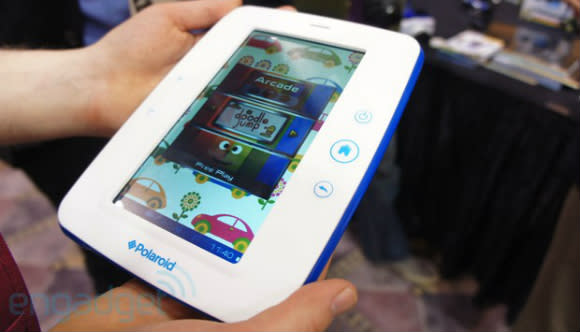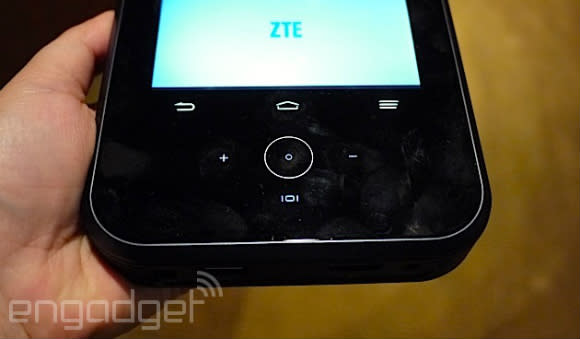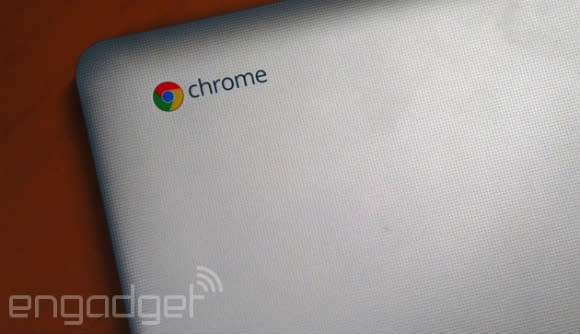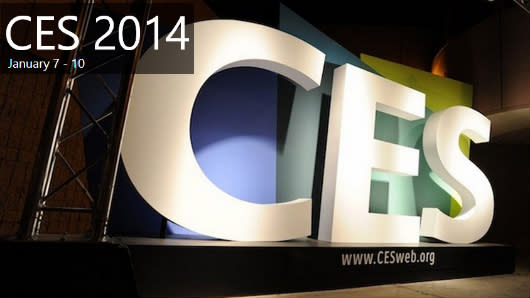MMObility: CES highlights for mobile gaming enthusiasts
Most years, I am unimpressed by CES, the Consumer Electronics Show held in Las Vegas. Sure, I watch the feeds and keep an eye on the latest bits of technical glitter that pop out of the event, but generally I find 4K televisions that cost thousands of dollars to be about as exciting as a bag of dead hamsters. I don't care about the next wave of supercomputers, and I certainly have no interest in technically advanced cars that mostly innovate on ways to make people spend money.
What excites me about almost any trade show is the stuff you find in the corners of the show room: the smaller booths, the indie developers or the hints of up-and-coming tech that will eventually make our lives easier and more fun. And of course, I'm always excited to see tech that might bring mobile MMOs to the place they deserve to be, a place in our everyday lives. CES is exciting to me because it shows the potential and possibly inexpensive future of tech.
Thanks to Engadget, one of our sister sites, I was able to get more than an eyeful of neat mobile tech!

The phablets
A phablet is just a very large phone. I went from a Google Nexus 7 with 3G (the best tablet at its size) to a Samsung Galaxy Note 8.0 4G LTE. I really enjoy the size, but seven or eight inches is about as large as a tablet can be while remaining realistically mobile. I put my tablet in my coat pocket or (as my wife calls it) a "murse." Why make phones that are six or seven inches when we have tablets? Well, probably because we are not allowed to call 911 from Skype or other VOIP programs, something that still perplexes me. I believe that the limitation is due to the inability of Skype or VOIP to pinpoint location like a cellular device can, but it might also just be politics.
The Hi-Sense X1 6.8 Smartphone (we still use the term "smartphone"?) is impressive, but it doesn't really change the game. What I find exciting about it is its existence, adding still another option for people who really enjoy doing almost everything from one device. It's a fully capable machine with a Snapdragon 800, 1080 IPS display, a 13-megapixel camera, and Android 4.4. More phablets, please.

Kids tablets
My sister-in-law recently asked for advice on purchasing a tablet for her child. I went to far as to link information and even fired off a quick video, but I know that the market is changing about as quickly as its adult cousin. There were a few kid's tablets on display at CES, but some of my favorites were the Polaroid Kid's Tablet 2 and the Kurio 7x 4G LTE. The former offers an easy-to-switch mode that gives a parent access to a decently powered tablet (when the kids are in bed), and the latter gives kids a tablet with 4G access for those long road trips, trips to the grocery store, trips to the doctor, trips to the park, to the circus, toy store... you get the point.
I think we'll see more "kids" tablets that also offer good enough specs to satisfy a parent's needs. As I advised my sis-in-law, a parent could always buy a normal tablet (like the Kindle Fire HDX), place it inside a protective casing, and use its parental controls. That can be a costly project, however. Tablets that are made for children usually come bundled with kid-friendly games and are protected inside a tough casing but still give parents a device to check email or watch videos. Not a bad combination. I'm excited to watch as these tablets become powerful enough to provide children with tablet access while keeping parents happy.

The oddities
One of the main advantages of mobile gaming is, well, being mobile. It's a real pleasure to kick back in the park for a dungeon run, but it's possible only with better access. Many of us can play on our phones, but those tiny screens can be a hassle... unless you own one of those new-fangled phablets! (see above). I have a tablet that acts as a hotspot for up to five people, but it's not a bad idea to have other options for those boring waits at the airport or when attending a convention with a crappy connection.
The ZTE Hotspot Projector is a bit of an odd-duck; it acts as an all-in-one device. It's a 4G LTE hotspot for up to eight people, but it also projects images and runs Android 4.2. You could even plug in a console or other device. I can only imagine how useful this might be during a quick, mobile-MMO dungeon run! This item should be filed under "Odd Stuff That Just Seems Useful," even though hotspots are nothing new.

The wearables
Wearables are all the rage lately. This category features objects that have been attempted many times before, but only now is technology really catching up with the possibilities. Smart watches, intelligent goggles, tiny cameras that automatically snap photos of our life for later viewing -- it's all a bit creepy-but-cool.
Google Glass is no longer the only name in smart glasses. There were more than a few options at CES for those who feel like being that weird guy in the coffee shop who is pointing a camera at everyone. Smart watches are the real next big thing, though, with offerings from Magellan, LifeTrak, Neptune (technically a wrist-phone), Archos, Polar and many others. Smart watches are exciting because they add to the mobile experience. That means we could see real-world MMOs that work with the smart watch to warn you of an impending attack or when you are close to a material node, and the game images appear on your smart glasses. Right now, many of the offerings are a bit too bulky for most of us to be comfortable wearing, but they will shrink in time.

The chromebooks
As I mentioned above, I love cheap. I just sold my older Samsung Series 3 Chromebook and bought the newer, more powerful yet less expensive Acer C-720. I've even written articles about gaming on web-only devices. Toshiba announced its entry into the Chromebook arena, a 13-inch Haswell-powered device. (It's the first one of its size.) Chromebooks have been selling out on Amazon and other places and even provoked a series of commercials from Microsoft, which in turn fired off a series of videos from Chromebook fans, correcting Microsoft that Chromebooks are, indeed, "real laptops."
Lenovo also announced plans to release more Chromebook models. The company has already offered an educational model, but the announcement promises a summer of continued support and innovation for Chromebooks. It's a great time to be a 'Booker.
Did you see anything exciting at CES? Let me know in the comments!

Each week in MMObility, Beau Hindman dives into the murky waters of the most accessible and travel-friendly games around, including browser-based and smartphone MMOs. Join him as he investigates the best, worst, and most daring games to hit the smallest devices! Email him suggestions, or follow him on Twitter and Facebook.


